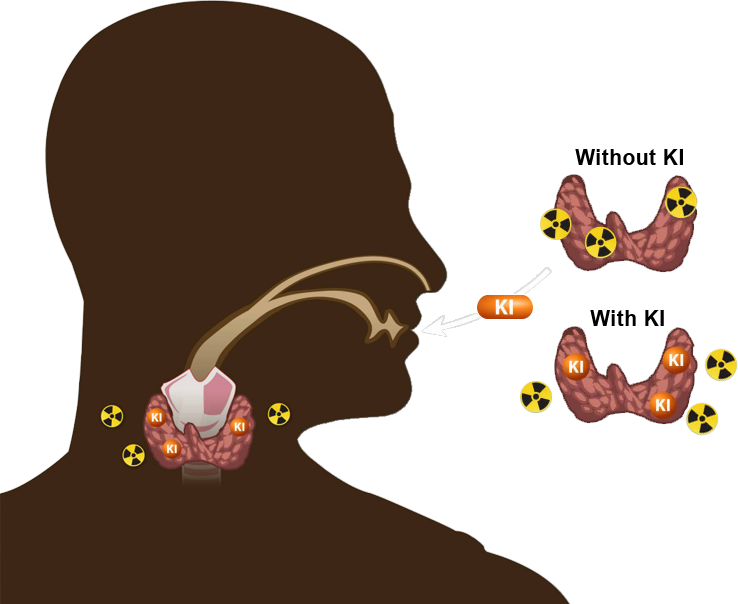How Potassium Iodide (KI) Works

KI is a pill or liquid that can be used in radiation emergencies that involve radioactive iodine. KI contains non-radioactive iodine. Non-radioactive iodine helps prevent radioactive iodine from being absorbed by the thyroid gland.

The thyroid gland cannot tell the difference between non-radioactive and radioactive iodine. It will absorb both kinds.
KI works by keeping radioactive iodine out of the thyroid gland where it can cause damage. When a person takes KI, the thyroid absorbs the non-radioactive iodine in the medicine. Because KI contains so much non-radioactive iodine, the thyroid becomes “full” and cannot absorb any more iodine—either stable or radioactive—for the next 24 hours.
KI does not keep radioactive iodine from entering the body and cannot reverse the health effects caused by radioactive iodine once the thyroid gland is damaged.

Do not use table salt or food as a substitute for KI. Table salt and foods rich in iodine do not contain enough iodine to block radioactive iodine from getting into your thyroid gland. Too much table salt can be harmful.

Do not use dietary supplements that contain iodine in place of KI. Only use KI products that have been approved by the Food and Drug Administration (FDA).

Only take KI on the advice of a medical doctor, public health, or emergency management officials. Taking too much KI or taking KI when it is not recommended can have serious health risks.